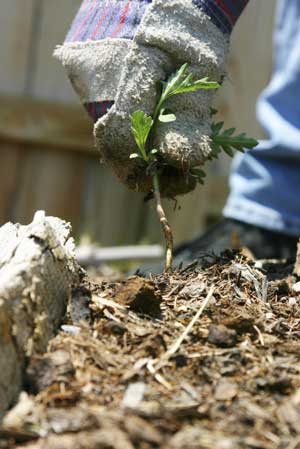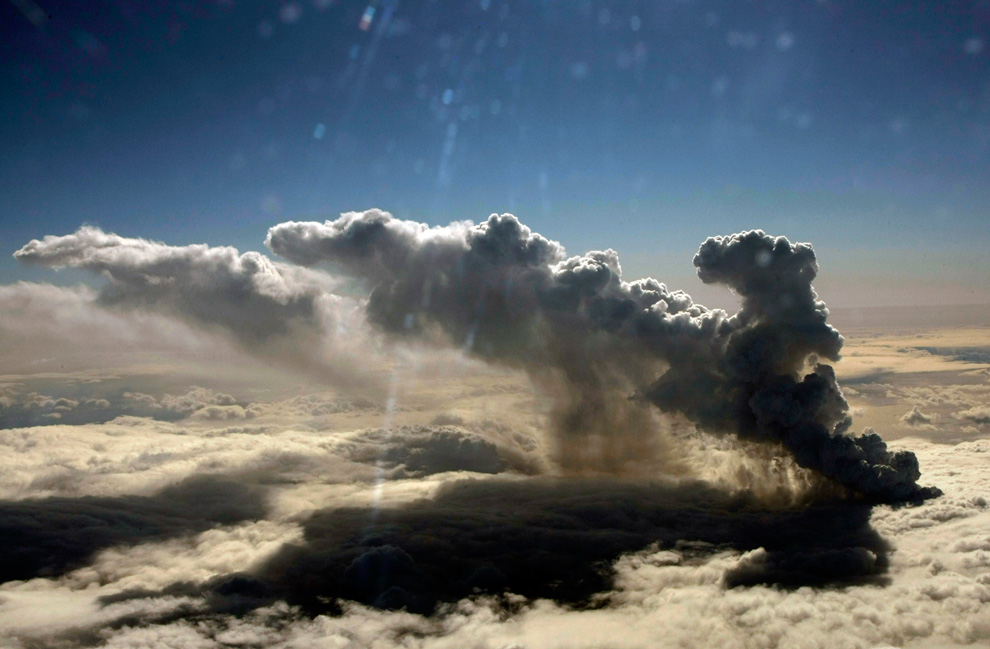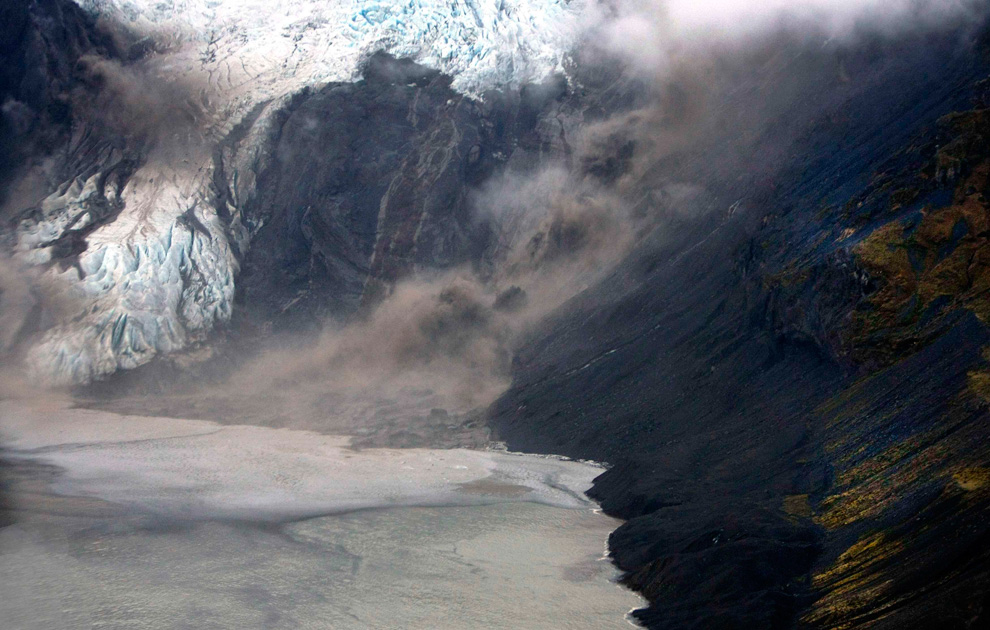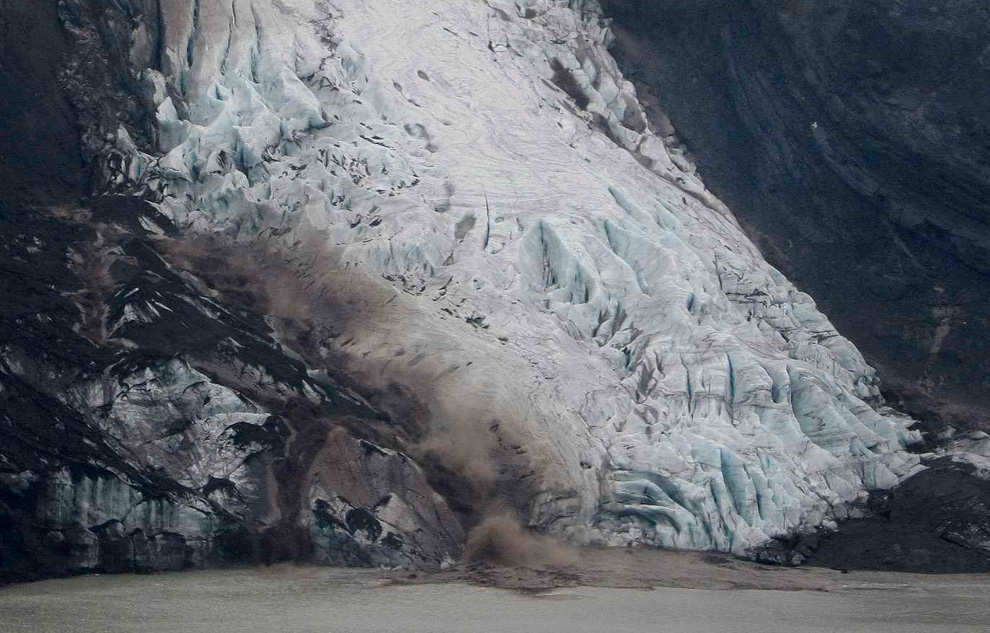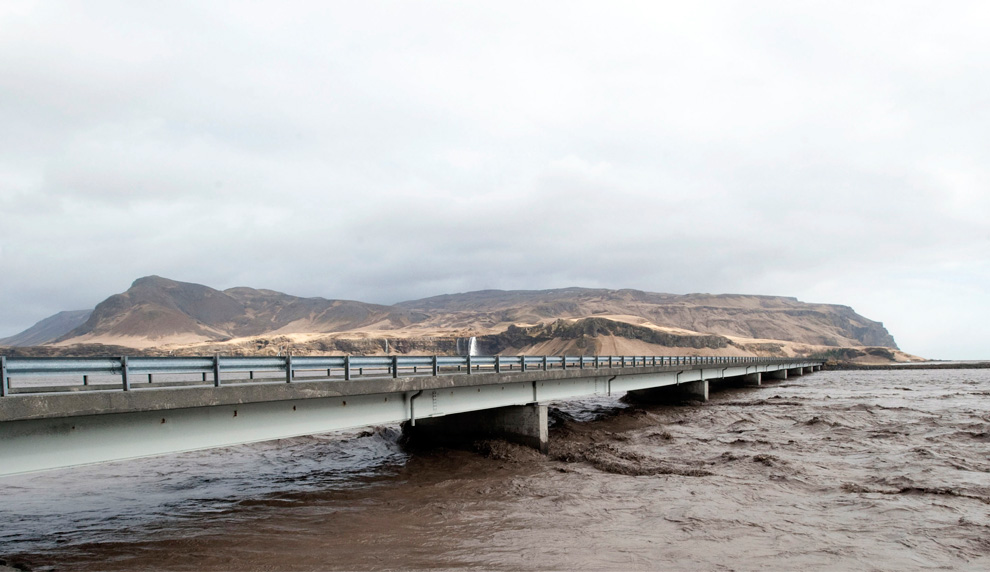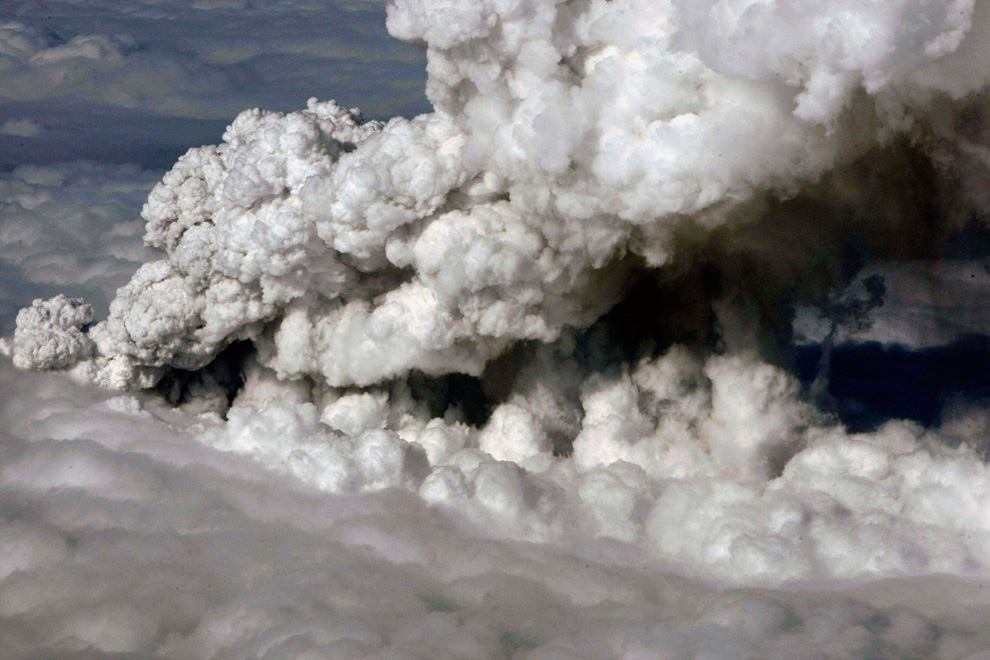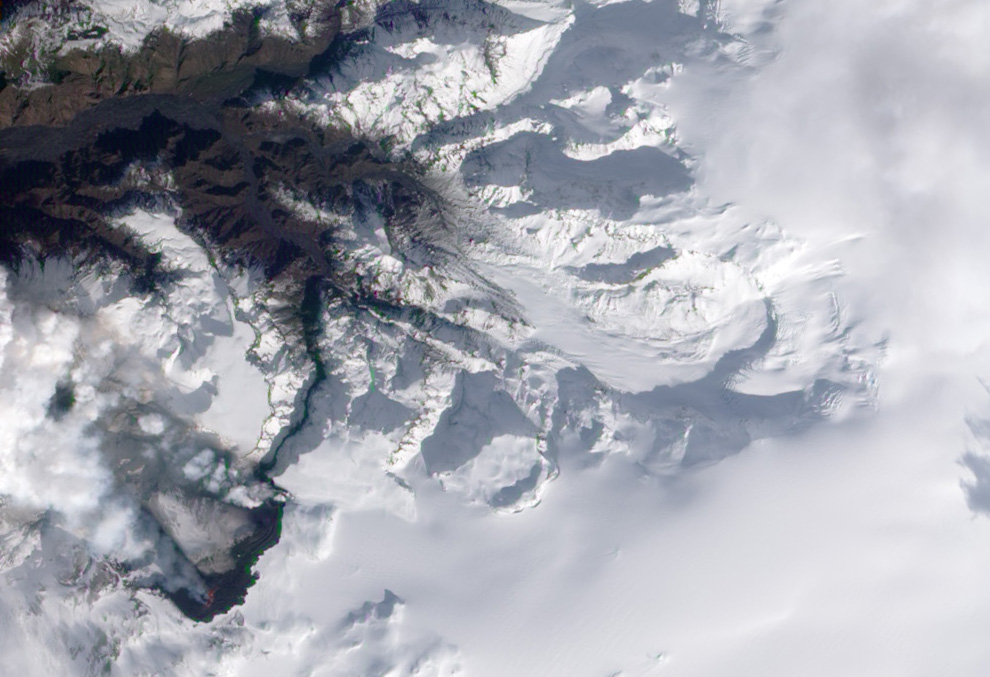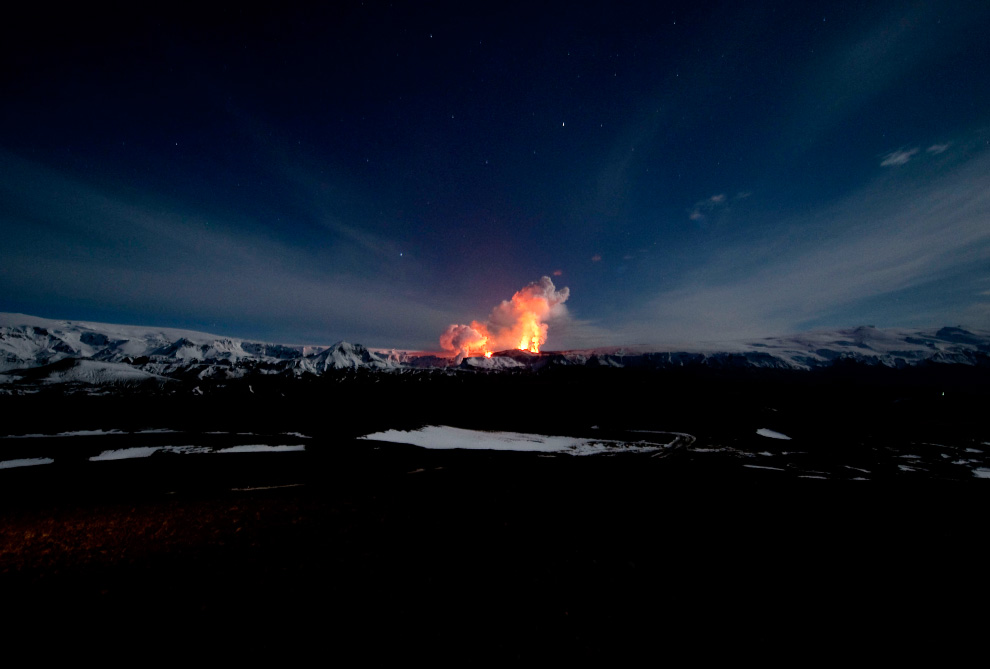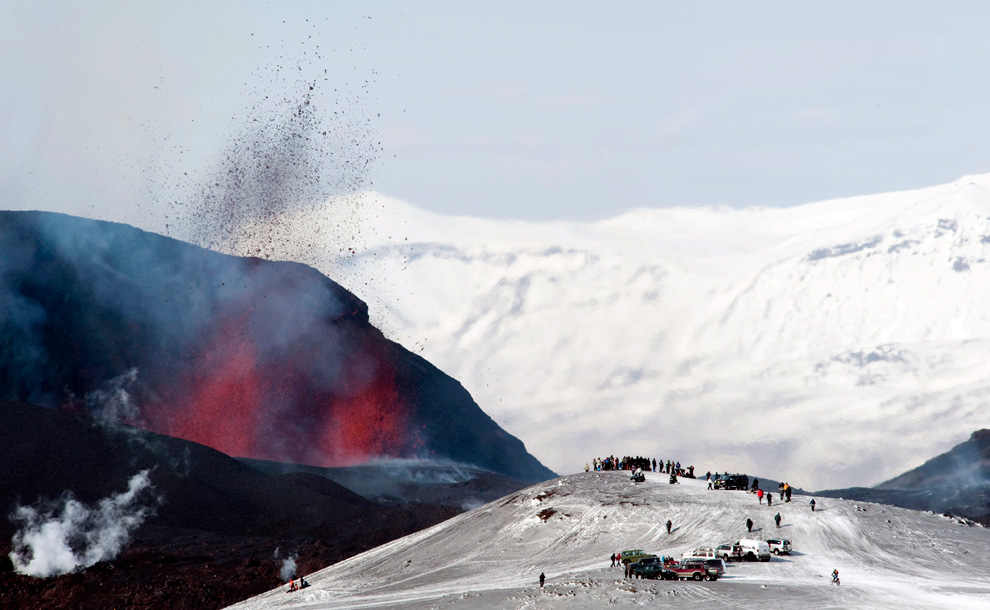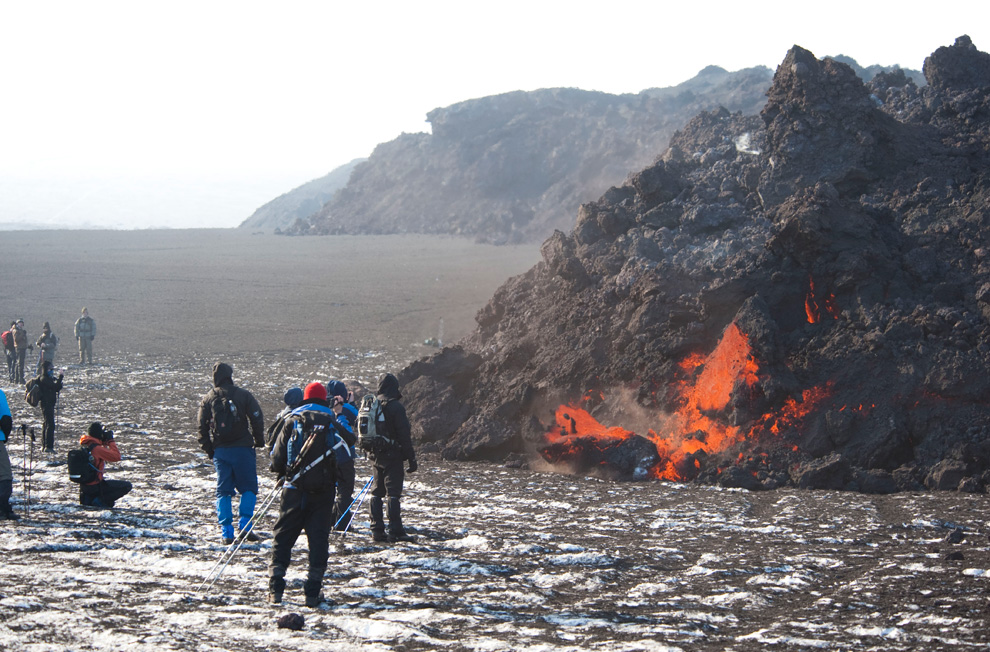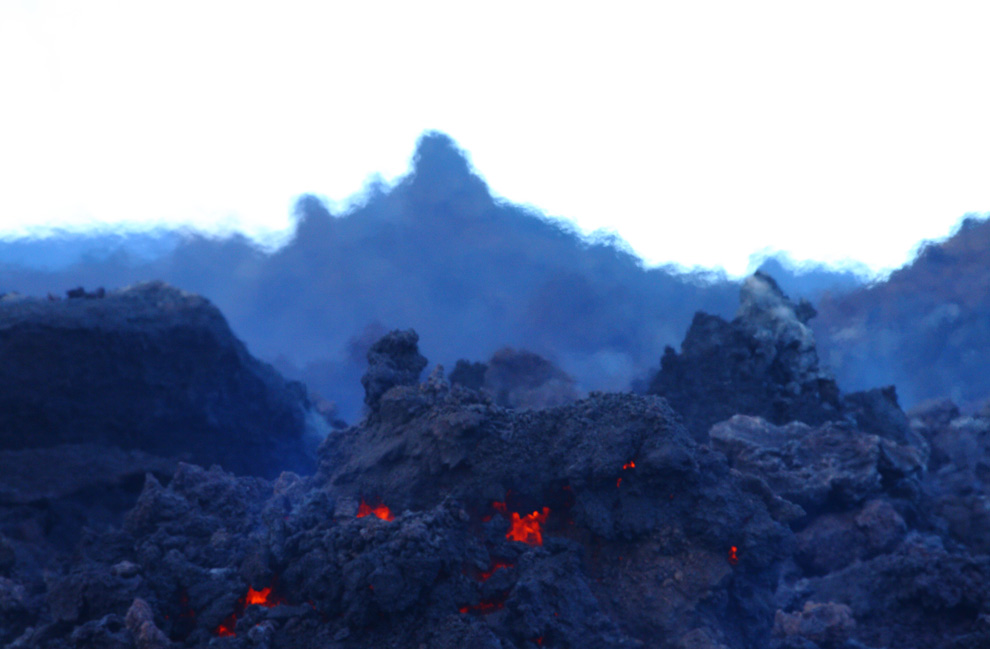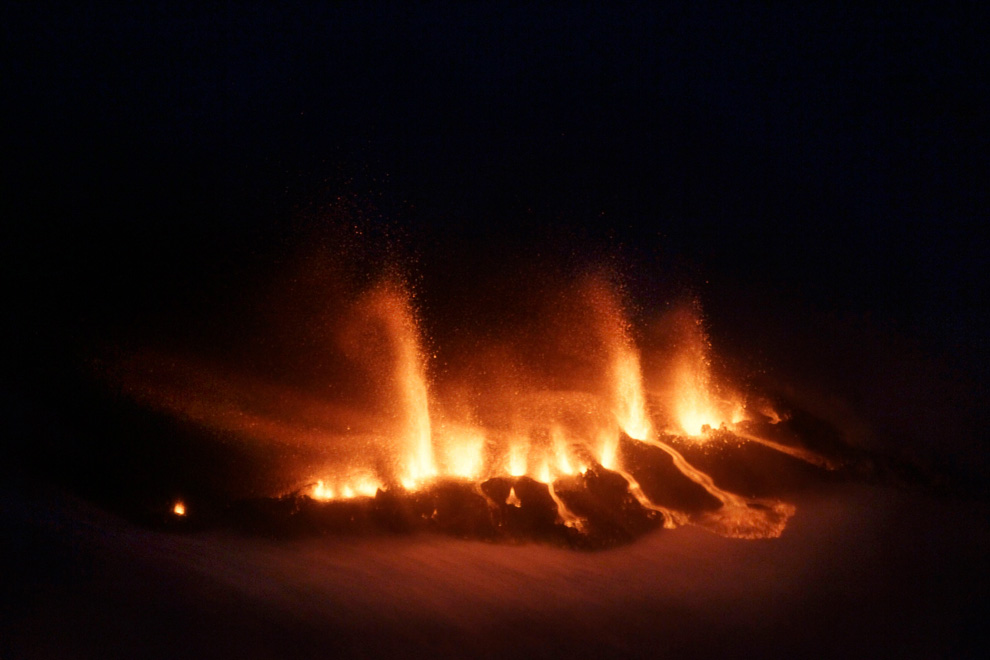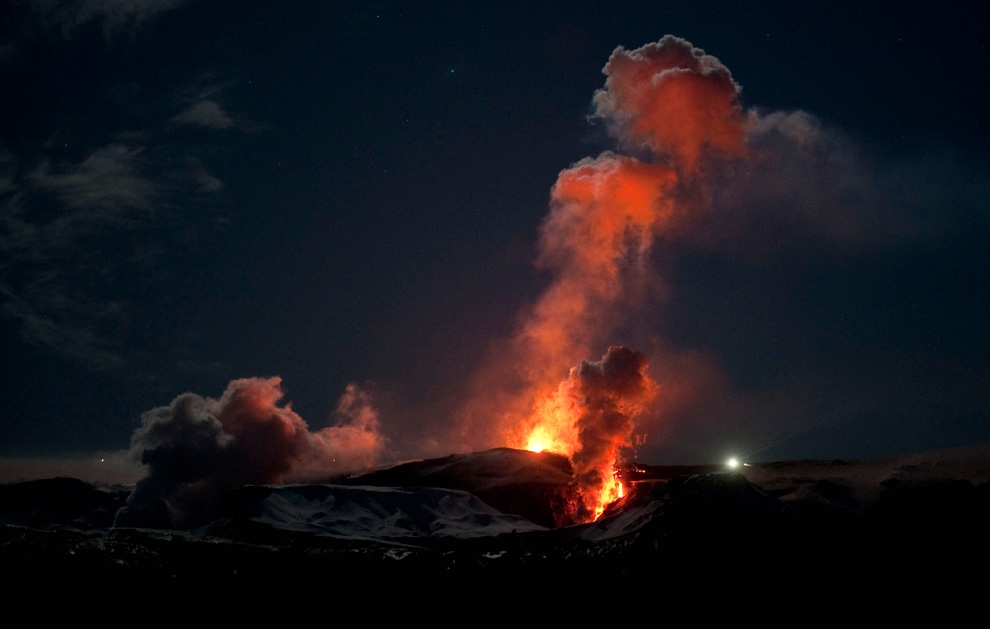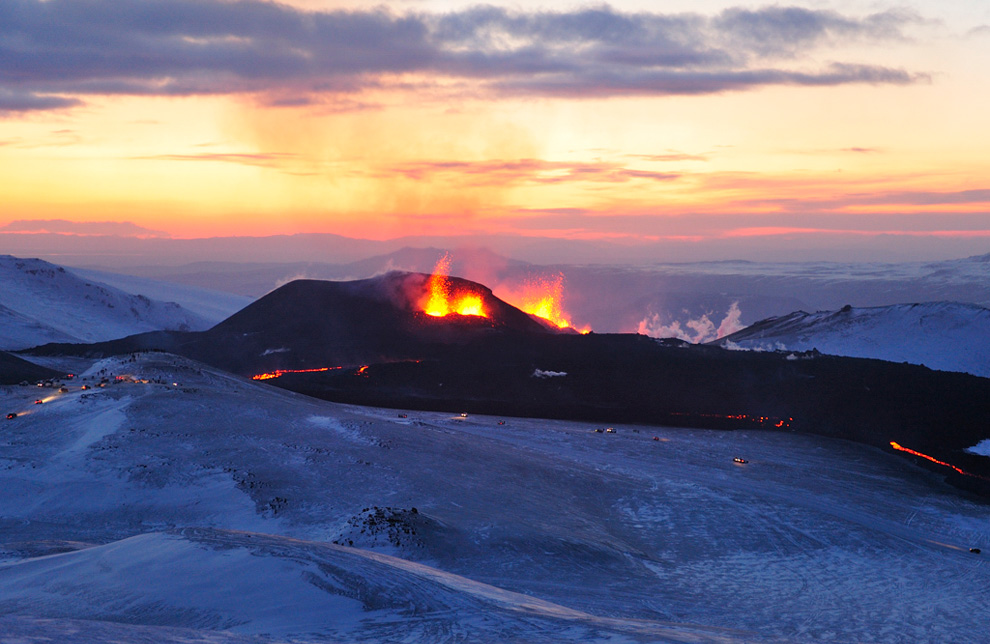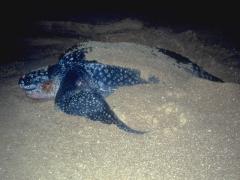
The following is based on information from the
Recovery Plan for U.S. Population of Leatherback Turtles, U.S Fish and Wildlife Service and National Marine Fisheries Service, 1992. Obtained from the U.S. National Marine Fisheries Service, and used with their kind permission.
Current Status
The U.S. Federal government has listed the leatherback as endangered worldwide.
Within the U.S., the leatherback is known to nest in Southeastern Florida, Culebra, Puerto Rico, and St. Croix.
Description
The leatherback is the largest living turtle and is so distinctive that it is placed in its own separate family, Dermochelys.
All other sea turtles have bony hard plates on their shells (
carapace). The leatherback's carapace is slightly flexible and has a rubbery texture. No sharp angle is formed between the carapace and the under-belly (
plastron) so a leatherback is somewhat barrel-shaped. Many can grow to be bigger than one too.
The front flippers of a leatherback are longer than in the other marine turtles, even when you take the leatherback's size into account. They can reach 270 cm in adult leatherbacks.
The largest leatherback on record was a male stranded on the West Coast of Wales in 1988. He weighed 916 kg.
Leatherback hatchlings look mostly black when you are glancing down on them, and their flippers are margined in white. Rows of white scales give hatchling leatherbacks the white striping that runs down the length of their backs.
While the Recovery Plan (being a scientific document) makes no mention of this,
Turtle Trax would be remiss not to mention it here: hatchling leatherbacks are cute and engaging little animals.
Of considerable interest is that the core body temperature of adults in cold water has been shown to be several degrees Centigrade above the surrounding water. This allows leatherbacks to prosper in ocean regions where other marine reptiles cannot. Fellow Canadian Michael James of Dalhousie University has been training fishermen in eastern Canada to spot leatherbacks, resulting in numerous sightings and an increased awareness that sea turtles inhabit Canadian waters too.
In 1982, Peter Pritchard estimated that 115,000 adult female leatherbacks existed worldwide and that roughly half of them probably were nesting in western Mexico. In recent years, however, the number of nesting leatherbacks has been in an alarming decline.
Threats
Leatherbacks have historically been taken only rarely for their meat. The greatest threat used to be to their eggs, and this threat still exists. There aren't as many eggs to poach these days, however, because fewer and fewer leatherbacks show up to nest. Scientists have concluded that gill-net and longline fisheries are to blame,
Commercial Fisheries
In 1987, it was estimated that offshore shrimp fleets capture about 640 leatherbacks each year. About a quarter (160) die from drowning and many others die when they are injured unintentionally on the decks of these trawlers. A few years ago, US regulations made the use of
Turtle Excluder Devices (TEDs) mandatory. While compliance remains a problem, TEDs have saved many leatherbacks.
A group of sea turtle biologists recently concluded (June, 2000) that gill-net and longline fisheries were probably causing the decline. They published their findings in the prestigious journal
Nature. They based their findings on the steep decline in the number of nesting turtles. Although some actions have been taken to limit the impact of longline fishing in the Pacific, the future of the leatherback is still seriously in doubt.
Nesting Environment
Leatherbacks prefer open access beaches possibly to avoid damage to their soft plastron and flippers. Unfortunately, such open beaches with little shoreline protection are vulnerable to beach erosion triggered by seasonal changes in wind and wave direction. A presumably secure beach can undergo such severe and dramatic erosion that eggs laid on it are lost.
The theft of eggs for local consumption is not currently a problem in Florida but continues in low levels in the U.S. Virgin Islands. Even though the harvest of turtle eggs is illegal in Puerto Rico, law enforcement efforts have been unsuccessful in deterring it. Historically, the situation was no better on Puerto Rico's smaller islands: e.g. egg poaching has been described as "extensive and unrelenting" (Carr 1978) and a "major problem" (Tucker 1988) on Culebra. Today poaching has been all but eliminated on Culebra as a result of nightly partrol and nest protection programs initiated by FWS on important nesting beaches in 1984.
Leatherbacks are also vulnerable to beach armouring, beach nourishment, artificial lighting, and human encroachment, as described in
Threats to Marine Turtles.
Entanglement at Sea
Leatherbacks are the most
pelagic of turtles, feeding in the open ocean rather than near shore as other marine turtles do. At sea, they become entangled fairly often in longlines, buoy anchor lines and other ropes and cables. This can result in injury (rope or cable cuts on shoulders and flippers) or drowning.
Ingestion of Marine Debris
Leatherbacks have mistaken plastic bags, raw plastic pellets, plastic and styrofoam, tar balls and balloons for their natural food. Ingesting this debris can obstruct the gut, lead to absorption of toxins and reduce the absorption of nutrients from their real food.
Leatherbacks appear to mistake floating plastic in the form of bags or sheets for jellyfish and then eat it. Ten of 33 dead leatherbacks washed ashore between 1979 and 1988 had ingested plastic bags, plastic sheets or monofilament.
Conservation Accomplishment
The Recovery Plan for the U.S. Population of Leatherback Turtles states:
A substantial effort is being made by government and non-government agencies and private individuals to increase public awareness of sea turtle conservation issues. Federal and State agencies and private conservation organizations such as the Centre for Marine Conservation, Greenpeace and National Audobon Society, have produced and distributed a variety of audio-visual aids and printed material about sea turtles. These include: a booklet on the various types of light fixtures and ways of screening lights to lessen their effects on hatchlings (Raymond 1984), the brochures "Attention Beach Users, "Lights Out" bumper stickers and decals, a coloring book, video tapes, slide/tape programs, full color identification posters of the eight species of sea turtles, and a hawksbill poster. Florida Power and Light Company also has produced a booklet (Van Meter, 1990) with general information on sea turtles. In the USVI, the St. Croix Environmental Association, the University of Virgin Islands Extension Service, the Environmental Association, the University of the Virgin Islands Extension Service, the VIDFW and NPS are actively involved in circulating newsletters and information packages, and in presenting slide shows and seminars. EARTHWATCH-supported projects in Puerto Rico and in the USVI have involved many people in sea turtle conservation efforts. These projects on Sandy Point, NWR, St. Croix, and Culebra, Puerto Rico, have both brought a great deal of attention to this species and have generated high levels of local involvement and awareness. In both locations, the general public has become aware of the problems facing the species and in general has developed protectionist attitudes, in contrast to previous attitudes of exploitation.
Leatherback Quick Facts
Reprinted from Florida's Sea Turtles, Copyright 1992, courtesy the Florida Power & Light Company.
The leatherback is the largest of the sea turtles; it travels the farthest, dives the deepest and ventures into the coldest water.
- Named for smooth, rubbery shell
- Feeds on jellyfish
- About 50 nests a year reported in Florida, estimates of 70,000 to 115,000 breeding females worldwide
- A huge turtle: adults weigh 700 to 2,000 pounds and measure 4 to 8 feet in length
- Hatchlings: 2-1/2 inches long
- Nest in Florida from April through July
- Many leatherback turtles die from ingesting plastic debris mistaken for jellyfish











